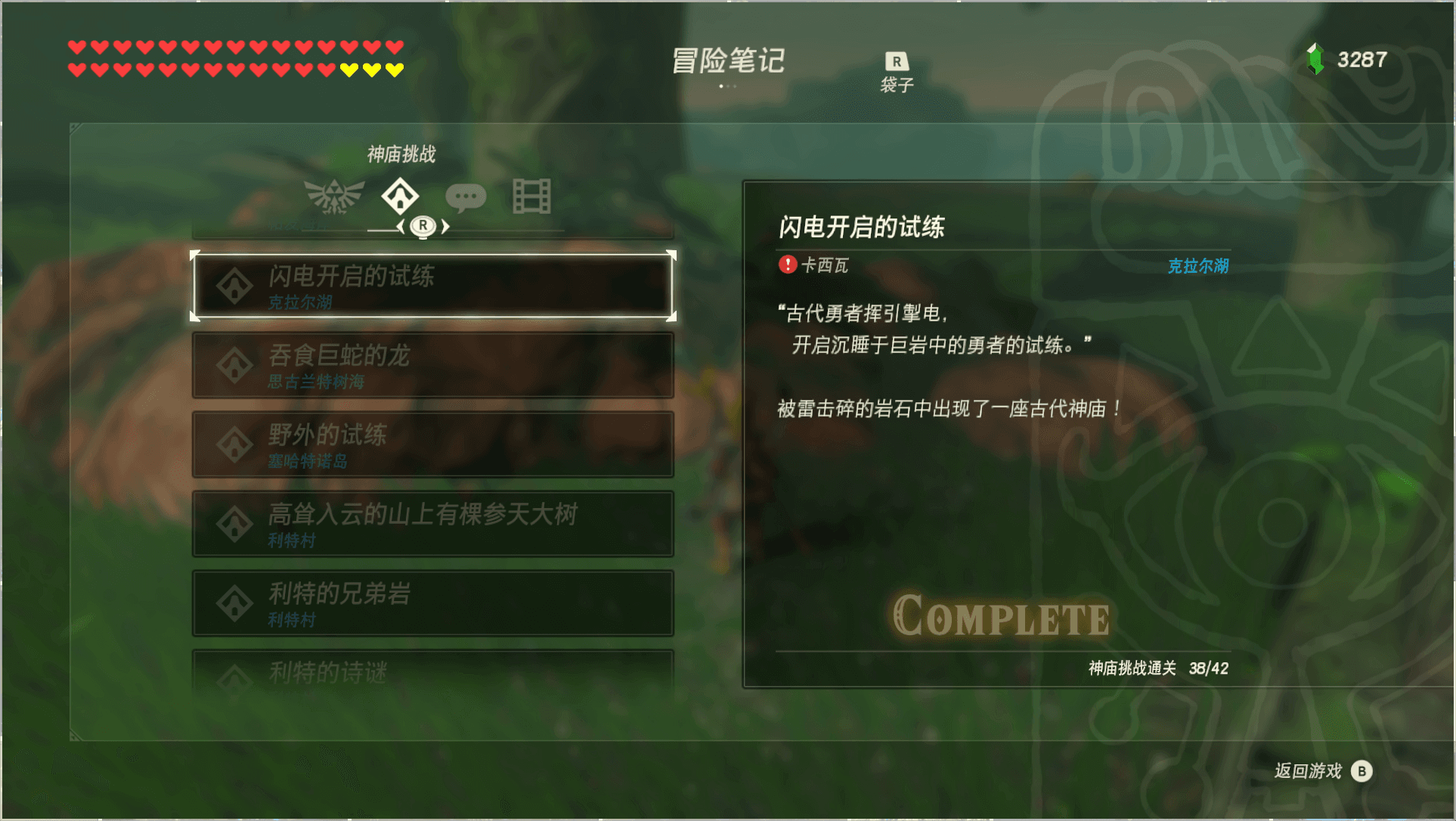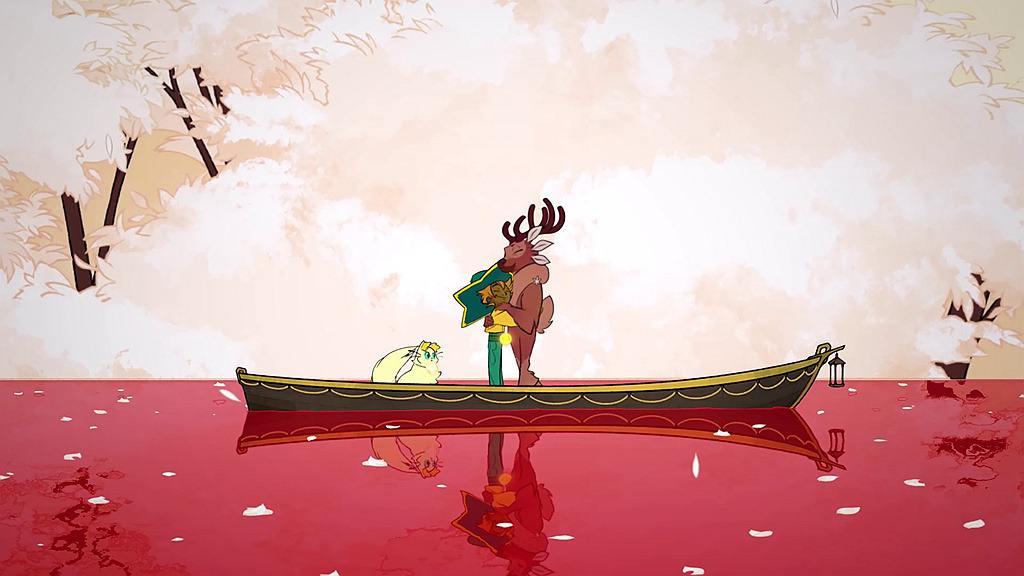引言#
许久没有静下来心来玩一款游戏了,国庆这几天宅在家里,体验了一下《光・遇》,而又联想到许多以前玩过的游戏,有感而发,遂就此文。由于专业的关系,本科学教育学时读过一些心理学,硕士念的也是中国哲学,因此本文会较为深入地去分析游戏的价值与影响,对游戏玩法、交互体验、设计美学的分析会稍少。本文将主要以美学的角度来赏析《光・遇》的美术风格,以心理学的角度去分析《光・遇》的核心玩法,以解释学的视角来诠释《光・遇》的禅意社交,最后以存在主义的核心价值作为文章收尾。虽以《光・遇》为始,但最后分析的也不仅仅是《光・遇》。综上,文章整体脉络变构成了 “四位一体” 的第九艺术分析。

美术风格:意象、自由、审美价值#
意象#
意象是审美中 “美” 本身,是美之本体。在美学的演化中,如果说有一个概念关注美学本身,那就是意象。《光・遇》中光怪陆离的风景意象如同卡尔维诺的《看不见的城市》那样,是现实与心中的那些虚构之城,交相辉映,轮回交替,更像是一场灵魂的旅行,带着思索穿梭于各个城市之间。
所谓意象,由 “意” 与 “象” 构成,“意” 即诗意,而 “象” 并不只是指具象,也包括想象。我们先来看看其中之” 象 “。想象,是假定与自由的象征,假定了,感情才有自由。反过来说,若《光・遇》中场景如实反映生活,不存在那些会发光的蝴蝶、会漂浮在空中的水母、会上天如海的鲲鹏、漂浮在空中的城市,而仅是拘泥于现实生活中存在的物体,那么没有想象,感情就没有自由,也就没有诗意了。所以我们说,艺术的精致,就在于是一种情感、联想、语言的精致。作为第九艺术的游戏,《光・遇》将这种艺术的精致发挥的淋漓精致。

如果说想象是美学的灵魂,那么诗意是美学的境界。意象之中不但有极其精炼的 “象”,而且有极其独特的 “意”。所谓意境,不仅仅是意象群落之间的建构,而是意象与意象之间沿着意脉延伸发展而出的那般足以表达诗意的境界。
以《光・遇》之中的雨林来看,整体意象包括了绵绵细雨、深邃林木、幽幽微光、涓涓溪流、呖呖鸟鸣,它们组成的意境除却整体美之外,这些意象群落空白中也有着潜在之美,将深邃幽暗浅浅地流露了出来,“不着一字,尽得风流”。

奈何笔者词穷,借用司空图的一段话:“诗家之景,如蓝田日暖,良玉生烟,可望而不可置于眉睫之前也。象外之象,景外之景,岂容易可谈哉。”(语出司空图《与极浦书》)“象外之象”、“景外之景” 就是潜在的隐性的言外之意,意境的精彩往往在语言不可穷尽的空白中,需得主体亲身体验方可领略。
因此我们可以发现这个意象,客体是概括的,主体的情致是特殊的,是二者的统一。从客观对象来说,这是一种发现,从主观情感来说,这是一种体验、顿悟;从意象符号的创造来说,这是一种更新。意象的目的并不是要表现客体,而是要表现主体的情志。
这就是 “意”,这就是诗意。在海德格尔的定义中,所谓诗意,其实就是创造。这个创造跟我们平常所说的创造也不一样,他说的创造,是以一种合适的状态,来面对你的周遭的世界,这个世界会向你绽放出一种意味来。
自由#
我们刚才说到意象是审美中 “美” 本身,是美之本体;那么自由便是 “美” 的目的。可以说,《光・遇》中的所有系统都在为这个目的而服务着,而《光・遇》的自由表现在想象的自由与玩法的自由。
前文中我们谈及假定就是想象,而想象的自由是艺术的生命,这体现在开放式的先祖故事与背景设定上。你需要追随先祖逝去的记忆碎片来解放他们的灵魂,整个过程中没有任何的文字介绍,让人不禁会想象他在生前究竟经历了什么、又是怀着怎样的心情经历了这一切。在旅途中看到跪在地上淋雨的先祖,你会情不自禁驻足为其撑伞。因此,这个先祖讲了一个什么故事不重要,重要的是,这种浪漫的叙事方式给你带来了情感上的体验。相反,若是被动地去反应真实的故事,那未免太理想了,情感就太不自由了,理性压抑了情感,就会失去感染力。

几年前,《Mountain》则是把想象的自由发挥到了极致,可以说这款游戏的意义就在于想象,在于玩家自身。当山上落下一颗螺丝钉时意味着什么,每个人的想法都是不一样的,我们每个人都活在自己的认知里,因此只有当你能够静下心来去思考、去想象,去让自己处于独立状态时,Mountain 可以依赖于任何物体的外观而存在,你就能发现其中的乐趣。而当它对我们的观念和情感产生影响时,它的意义便产生了。《光・遇》中那些无言的故事也是如此,故事只是传递情感体验的媒介,先祖们的真相到底如何不重要,真正打动你的,是故事给你带来情感上的体验。这是想象的自由所赋予故事的独特魅力。

除了想象的自由,在玩法上,《光・遇》也有很强的自由性。游戏设计不存在主线任务,也不需要打怪升级,再配上几乎为零的新手教程,让很多新人玩家初次游玩时无所适从,想要一打开游戏就获得快感的玩家也注定是要失望的。但游戏操作却也简单,仅仅有移动与飞翔两个按键,这种模式让玩法变得更加自由,你可以漫无目的去看遇境的黄昏,去晨岛的彩虹桥练琴,去雨林的粉红海静坐听雨,去霞谷的千鸟城放烟火,去禁阁的板凳上数星星…… 玩法的自由赋予了玩家一种旅途感的自由,想要去探索更多鲜为人知的风景,这也是我游玩这款游戏的动力所在。

但私以为这种自由的游戏或许可以做的更好,至少加入适当的新手教程并增强下用户的探索欲。譬如《集合吧!动物森友会》以收集要素和前几天的主线任务来贯穿游戏全程,还有同样自由度超高的《塞尔达传说:旷野之息》则也是以若有若无的主线(救公主)来推进玩家探索神庙解救四大神兽。

否则就容易出现《光・遇》这样部分玩家刚上手就弃坑的现象,缺乏游戏动机导致缺乏游戏理解,而缺乏游戏理解又进一步的降低了探索动机,从而陷入恶性循环。不得不说,这是自由度过高缺乏主线的弊端。但若抛开商业化的角度,对于真诚的玩家而言没有多少影响。
审美价值#
意象是 "美" 的本体,自由是” 美 “的目的,而 “美” 与 “善” 的关系讨论则是” 美 “的价值意义。事实上,起初的美学便伴随着伦理学而诞生的,早期伦理学的关注重点,便是 “美” 与 “善” 之间的天然联接。从游戏设计的角度而言,审美价值的重要性永居前列。
在《光・遇》的世界中,善意无处不在。我在游玩的过程中尤爱世界角落里的蜡烛台,因为这里可以看到其他小可爱们的留言,这些善意的留言值得你为其驻足停留。

游戏中,在捧起蜡烛照亮路人之前,你是看不到对方的形象的,路人在你眼中只是一个小黑人。但是想要点亮对方,需要双方都愿意将自己蜡烛拿出来放在一起,同时照亮两个人。因为这个行为所带来的小小烛火可以为双方补充能量,所以在危险的地图中常能看见路上两三个小人沉默又温柔的互相点亮,给对方传递去一点起飞的力量。可能你在墓土里被冥龙撞成了一只小可怜,可能你在暴风眼里被风掀翻又撞上红石头,惨得要命又四下无灯补充能量,当你拿出一根蜡烛到处张望,身边总是会有小可爱过来照亮你,同时你的光也能温暖别人。这种你中有我,我中有你的善意举动,向世界分享着爱和温暖。

同样的,《光・遇》中还有一些特殊地图需要他人帮助才可以进入,比如有需要八人捧星的收集要素,有需要四人合力才能开启的大门,也有需要穿着特殊颜色斗篷的玩家牵手才能带你进去的隐藏图。无论你在哪里遇到困难,只要捧起蜡烛呼唤一声,静静等待,总有人陆续跑过来帮助你。我印象比较深的一次是在圣岛爬山,那会儿我还是个萌新,翅膀能量也不够多,爬了一个小时都上不去山顶,总是在半山腰跌落。于是我尝试呼唤了几声,就有个小可爱蹦蹦跳跳地跑过来帮助我。在山顶,我看到了不一样的风景。那一刻,我明白了,重要的不是旅途上的风景,而是陪你走过旅途的人,让你的世界变得如此不同。玩家的心灵就是为刹那间的情感而微微颤动。

这就是美的价值 —— 善意和温暖。
同样的,在陈星汉那款获奖无数的《风之旅人》中也有着类似的审美价值。游戏中玩家扮演一位穿着红衣的朝圣者,孤独而渺小地在沙漠中漫无目的地艰难行走着。忽然,你发现身边多了一个穿白袍的角色,那不是 NPC,而是在地球的某个角落与你同时游戏的玩家。

旅途中,他会无微不至的关照你,为你找到地图的收集品,带你去最好的拍照地点。你们会一起走过荒凉的大漠,踏过幽静的城堡,在暴风雪中相互扶持走向朝圣的终点。你们完全没有语言交流与肢体交互,却看到了人性的互相关怀。很多白袍玩家会在带你到终点的时候,用雪的纯净为你画一颗心。仍是风雪的声音,但何其浪漫。

你还有可能会遇到与众不同的白衣,他们是这个世界的导师,就像天使一般,他们往往也更加乐于伸出援手。玩过这个游戏的无数名玩家都会返回重玩,在重玩之时,你就变成了白衣。作为白衣,是为了带新玩家走完某一段路程,也是为了再走一遍那位自己还是红衣时,与帮助过自己的白衣共同走过的风景。如此朝圣,如此传承。
无论是《光・遇》还是《风之旅人》,都在用浪漫而审视的目光演绎着对这个世界的爱意和敬意。
核心玩法:共情、需要、行为主义#
共情#
与《风之旅人》不同的地方在于,《光・遇》使得 “相遇” 变得更加容易。在旅途路上,玩家可以看到形形色色的黑色路人,在双方拿起蜡烛点亮彼此之前,甚至看不清对方的容颜。双方点亮彼此之后,仍旧不能聊天,仅仅是可以相互之间做一些动作以及发出简单的叫声。而在这个无法通过言语的交流阶段,最容易产生共情。
所谓共情,即同理心,即设身处地地对他人的情绪和情感的认知性的觉知、把握与理解。主要体现在情绪自控、换位思考、倾听能力以及表达尊重等与情商相关的方面。因为无法通过言语交流,玩家彼此之间需要花费精力去倾听、思考、理解对方的感受和表达意愿,进入对方的内心世界,敏锐觉察对方经验意义的改变,进而作出恰当的回应,用体谅来回答他人的感觉。

除此之外,还有风景意境上的共情,《光・遇》中的七大地图晨岛、云野、云林、霞谷、暮土、禁阁、伊甸之眼都各具意境特色,总有一款能符合玩家游玩时的心境。网络中,我们将激发人兴趣和偏好的内容称为 “戳”,而 “戳心”,是个很形象的比喻。某些画面、某些意象、某些情节会让受众接触时升起生理反应,如过电一般,或如悲从中来,一旦拥有了这样深刻而强烈的反馈,玩家变会不由自主的深爱上这款游戏。从此,它便产生了黏性。
需要#
如果我们说 “共情” 是玩家产生黏性的起始因,那么 “被需要” 就是玩家体验到游戏价值的核心所在。每个个体都是被需要的存在,《光・遇》中则将这种 “需要” 场景体现在社交玩法与世界设定上。
首先在社交玩法上,前文提及了玩家的星火可以点亮彼此提供能量,这让每个玩家的小小微光都有了存在的价值。这一点我们在后文专门分析社交的章节中再来深入分析,此处我们先看看与玩法相关的货币系统。《光・遇》中的货币可以分为三类:蜡烛,升华蜡烛与爱心。普通蜡烛与升华蜡烛的区别在于前者平时游戏时可以很容易的收集到,后者是游戏通关后给予玩家的特殊奖励,可以用来解锁更高级的动作和装扮,但两者和其他游戏里的金币一样,都是由系统给予玩家的货币,用来购买或交换 NPC 提供的商品。但爱心的玩法却别出心裁,爱心获得的主要手段是玩家之间相互赠予,我送你一定数量的蜡烛,你就可以得到一颗爱心。爱心与其他两种货币的用途一样,能够从先祖处购换物品,但是先祖物品的解锁是树形结构的,因此三种货币对于玩家而言都同样重要、不可或缺。

爱心的设定使得每个玩家都愿意去主动地结交朋友,因为每个玩家自己本身,也是被他人需要的存在。
其次,世界设定上,游戏也强调了每个玩家的价值。你所扮演的光之子需要寻找散落在世界各个角落里的小光人和先祖,解放先祖们的灵魂,并将辛苦收集到的小光人保留到最后一关。在最后一关伊甸之眼中,你如临地狱,需要躲避来自四面八方的各种危险,拼劲全力,在暴风眼中将自己的光一点点分给其他已经石化的小黑人。在最后,作为光之子的你,也耗尽了生命的光源,石化了。这一刻,你才明白,暴风眼中那些石化的小黑人,如同自己一样,本也是一个个奉献出自己生命之光的光之子。
《光・遇》曾经在二测的时候更加强化了玩家这种的被需要感,想要进入暴风之眼就需要结伴而行,到入口处必须献祭出其中一人全部的光之翼,另一名玩家才被允许进入地图。后来或许是制作方认为这种要求过于苛刻,于是在正式版中删除了这一设定。

游戏结束后,你虽获得了新生,但象征能力的光之翼变回了同萌新一样的数量,你又得重新玩过,因为你知道暴风眼的黑暗之中,仍有许多石化的光之子等待着你去解救。这趟旅程,就是一次次救赎与被救赎的轮回。如同《风之旅人》一样,朝圣之后轮回至出生的起点,明明知道会一直重复,还是忍不住一次次走向山顶。
行为主义#
除却 “共情” 和 “需要” 之外,游戏心理学的重点是以行为主义理论来指导和设计游戏。提倡行为主义心理学的华生认为行为的单位是基本的 “S—R” 的联结,在行为主义体系中,“S—R” 将人类的复杂行为分解为两部分,即刺激(stimulus)和反应(response)。区别于巴甫洛夫的经典条件反射,斯金纳的操作性条件反射是操作 R 来强化 S,即 “R—S” 联结。因此,奖励性质的反馈能够刺激用户更多地重复对应行为,而惩罚性质的反馈则会减少对应行为。
基于这个理论,《光・遇》玩法设计涉及到以下两种:收集复刻先祖,限定物品以巨大的亏损率来强化玩家收集蜡烛,这种玩法是以亏损来刺激玩家;每日限量采集烛火,类似于 “收菜” 签到的机制有利于增加玩家黏性,这种玩法则是以奖励来刺激玩家。
而《光・遇》商业化薄弱,除了偶尔出的限定装扮,没有氪金玩法。相较于《原神》、《剑与远征》等游戏,它们不断利用玩家希望下一次就希望有五星 / 传说 / SSR 的赌徒心态,来诱惑玩家一次次充值抽卡。

此外,游戏的玩法设计也需要考虑玩家的受挫感。就笔者的感觉而言,《光・遇》给玩家的受挫感并不强烈,仅仅表现在暮土和暴风眼中的具备攻击性的冥龙,被攻击之后玩家辛苦收集的光之翼会丢失。不过这种适度的压力,会让玩家在困境中更加珍视人与人之间的友善关系。相较于《只狼》和《黑暗之魂》这类通过 “自虐式” 的挑战或是《空洞骑士》这种需要不断练习来磨练玩家战斗技巧的游戏而言,《光・遇》里的冥龙真的友善太多了。
再来看看《糖豆人终极淘汰赛》,这款游戏与《光・遇》不同,它是以随机性、娱乐性、短时长等特性来降低玩家的受挫感,较于 《英雄联盟》这种公平竞技认真打了半个多小时反而输掉一把排位赛而言,着实对玩家的心态培养更加友善。因此,许多主播乐意用这款欢乐的游戏来作为直播的调味料。

而《集合吧!动物森友会》则完全摒弃游戏设计中 “受挫感” 这一要素,玩家完全不会受到惩罚,譬如当玩家被蜜蜂蛰了会有村民来安慰你送药、甚至当玩家不小心打落气球掉在手里反而会获得 “安慰奖”,“动森” 采用 “你做什么都是好样的” 的方式抚慰玩家的失望并鼓励自由自在,让这个远离现实的无人岛更加符合玩家对 “桃源” 的认知。这种类似于 “夸夸群” 的存在,也是游戏玩法设计里的一株奇葩,却也完美契合了 “动森” 这个世外桃源的美好。

综上来看,《光・遇》的玩法设计与行为模式对玩家而言是非常友善的,不存在玩家之间的竞争关系与等级划分,也不诱导玩家进行报复性消费。《光・遇》的场景设计与玩法系统,始终是为了其核心价值服务的。
禅意社交:表达、体验、视域融合#
表达#
沟通是社交的唯一手段,如果没有沟通,人类社会的文明也无从谈起。表达与倾听的过程共同构成了双向沟通,由表达方式的不同,沟通的方式也千差万别,但本质仍旧是信息的交换。但现代人作为沟通的主要方式 —— 文字与有声语言,已日益疲软困顿,在某种意义上正印证了卢梭的那句话:“我们越积累新的知识,越是失掉了获得最重要的知识的途径。”(语出卢梭《人类不平等的起源与基础》)
《光・遇》中的表达手段则显得极为克制,加好友之前仅能发出叫声或做动作来与对方进行交流,就像两个原始人那样,剥离了语言载体,以最天然的方式倾诉着自己的情绪。这使得双向沟通时作为倾听的一方要付出更多努力来理解表达者的情绪,因此克制的表达手段,反而使得倾听者更容易直达表达者的心灵深处。那倾听者如何可能理解表达者的情感呢?这是一个 “举斯心加诸彼” 的过程,所谓 “推恩”,即 “善推其所为而已矣”。若双方可以做到这种情况下的正常沟通,那都是善于体察他人意愿、乐于理解和帮助他人的人。

由于人类有声语文符号的局限性,又由于事物属性的无限丰富,不可能有绝对严密的表达,何况情感与事物都是在不断变化发展的,一切的言语表达对事物的历史进程都只能是疲惫的追踪。可以发现,不仅是《光・遇》,在陈星汉的其他游戏作品中,如《花》、《风之旅人》,对角色的表达方式都极为克制。被限制的表达,不限制玩家想象的自由,如此便构成了这般禅意的社交。
巴别塔事件时,上帝通过分化语言从而使人们之间无法沟通,让人类分崩离析。语言的意义并不由上帝规定,而由使用者规定,并且沟通的手段也不单单只有语言,还有无数种其他的行为可以拉近人与人之间的距离。正如《去月球》中所表达的那样:“天空中闪烁的星星,那是一个一个灯塔,每个人都是孤独的灯塔,用光亮照耀别人,也在他人的光芒中感受温暖。”“去以自己的火点燃旁人的火,去以心发现心。”——《光・遇》的社交方式恰是何其芳这首诗歌的完美演绎。
体验#
狄尔泰的生命美学由 “表达”、“体验”、“理解” 三部分组成,其中 “表达” 为我们展现了社交意义本质的内在的逻辑联系,揭示了人类存在的本真性,而 “体验” 则是把人的内在意识与外在事实、个体与社会结合起来的关键。伽达默尔作为解释学美学的创始人,主张将传统解释学放到现象学本体论基础上研究,他认为 “体验” 的时间性和实践性还凸显了生命的现实意义和历史意义的结合,它不仅是心理学的事物,还是获得美学意义的事物。
作为第九艺术的游戏,带领玩家通过剧情的体验和对生命同情的理解,使之认识到文化即生命的体现。而为了了解人的文化和社会现实存在的各种联系,就得玩家再度深入地去体验各种情节,只有通过这种 “体验” 才能达到 “理解”。因此,玩家通过体验游戏,就能理解游戏设定所要传达的文化思想,而这种理解又为系统地解释自己的经历提供了依据。
玩家们表达了自己的情绪,体验到了他人的善意,就会理解世界中潜在的温暖。他们在《光・遇》中体验了一个爱与温暖的世界,那么回归现实之后,亦会更加重视人与人之间的社交关系,祈愿把这种温暖带到现实中来。

视域融合#
“视域融合”,是伽达默尔哲学解释学的一个重要理论。在说 “视域融合” 之前,得先了解下什么是 “视域”。通俗地说,“视域”(Horizont)就是主体受限于特定处境,从某一立足点所能看到的一切内容。所以,对象问题取决于我们的立场。《齐物论》中庄子早有这样的观点:“方生方死,方死方生;方可方不可,方不可方可;因是因非,因非因是。” 因是(因循肯定的立场)因非(因循否定的立场)看待对象会得到不一样的结果,并且所有人都要受到立场的限定,不可摆脱(“是以圣人不由,而照之于天,亦因是也”)。
又如王阳明的那句名言:“未看此花时,此花与汝同归于寂;你来看此花时,则此花颜色一时明白起来。” 我们的主观世界独立于客观世界而存在,又通过某种联系相互印象。如客观世界存在一朵花,你如果没有看到它,这朵花就不存在于你的主观世界中,当你看到了这朵花时,这朵花才在你的主观世界存在,并且有了形状和颜色。西方解释学也有一个崭新的研究视角:世界是否客观存在并不重要,但世界存在的意义,在于被认识本身,是受众的凝视决定了客体的存在。“没有被观察的事物无法自证自己的存在”。也即是说,所有存在的东西,都势必要依赖观察者来得以存在。
就像一千个人心里有一千个哈姆雷特一样,每个人处于不同心情、站在不同角度来看,花都是不一样的,这就是因为每个人都有自己独立的主观世界,或是有着不同的心理情结、有着不同审美视角。因此往往决定人对某种事物的理解的是事物在主观世界的呈现,而不是事物的客观模样。
此外,之所以有这种现象,也是由于能够被我们把握到的只是个体的特征,具体的个体则无法把握。所谓 “逻辑”,就是一个对象在一个概念之下,我们将对象分为性质和个体,例如:
Fa: 孔子是哲学家
那么这个命题中的 a 即是个体常元,表示孔子;而 F 即谓词,描述某个个体是一个哲学家。我们可以发现,对于具体的个体我们无法把握,在所有的艺术表现中,我们把握到的仅仅是某个个体的特征。而我们心中一个概念的形成,就是由这些个无数视域融合后的结果。而我们的立足点越高,自身的历史视野、文化视野就越是开阔,越能够按照大和小、远和近去正确评价视野所及的范围内一切事物的意义。
《光・遇》中有一个有趣的设定,每个玩家都是没有昵称的,你的名字取决于他人对你的命名。你或是爬山期间遇到了一个旅伴,你可以叫他登山者;或是在孤寂的时候结识了一位琴者,你可以称他为琴师;或是在危险时被好心人救下,你可以拜他为大佬。同样的,你的形象也千千万万,你的人设并不像朋友圈里的那般单一,这才是真实的你,是由无数视域下交汇融合的结果,你可此证自己的存在。

除此之外,《光・遇》有着可爱友善的玩家群体,他们基于兴趣对光遇的二次创作或是 cosplay,又为这款游戏注入了更多视域灵魂。

价值意义:情结、存在、精神之旅#
情结#
情结在荣格分析心理学的理论中具有十分重要的地位,它指的是一群重要的无意识组合,是一种心象与意念的集合,或是一种藏在一个人神秘的心理状态中,强烈而无意识的冲动。能沉溺于《光・遇》世界的玩家,或多或少心中存在那挥之不散的情结,祈求在这世界里找到依托。至少在重生道路上,一无所有的 “我”,跌跌撞撞一瘸一拐地走向那发光的灵魂,埋头拥抱之后,确实感觉到眼角湿润。游戏中有许多精心设计的肢体动作,其中,拥抱我尤为钟爱,就像有人轻轻抚摸了一下我的灵魂一样。

将拥抱这个动作当做主要交互的游戏还有《灵魂旅人》。维琴尼亚・萨提亚提有个理论:人每天至少需要 4 个拥抱才能存活。每每看到这个理论,作为失去拥抱许多年的我而言不屑一顾但是当我看到一贯高冷的葛文因为我的一个拥抱而展露幸福微笑,我开始倾心于这一学说。每一个拥抱都是一个美丽的心情,可以换来 NPC 们的笑颜,也能带给玩家们温柔。

除了拥抱,离别也常常是人们的情结之一,离别是痛苦而无法逃避的成长,而《灵魂旅人》的主题在于断舍离,在于教会人们如何去说再见。相遇与离别是人类交往的永恒主题,关于相遇,《光・遇》中已经涉及许多,但作为相反面的离别,《灵魂旅人》恰是补足了这一个空白。
《灵魂旅人》同样也是一款佛系、探索、收菜类游戏,玩家扮演的是一位灵魂摆渡人,在海上四处漂流,去接纳那些流离失所飘荡在各地的灵魂,让他们住在你的船上一起过日子,并顺便完成他们生前未了的心愿,送他们去永恒之门轮回转生。他们会逐一地、会让你将他送别,到游戏开始的地点,在红色的冥河,泛着小舟,跟他相拥,勇敢和他说再见。每送一个角色,会进入他的梦境,他生前的故事将会历历在目。次日醒来之后,你便再见不到他,它曾经住在你船上的房间,会有一束灵魂之花,像是葬礼的告别,但是这束花的模样会永远留在你的心底。他们教会了你面对离别的真谛,并总会在恰到好处的时候给你一个温暖的拥抱。
这就是作为第九艺术所带来的情结。
存在#
社会人容易迷失自我,只知道生活在他人的意见之中,也可以说,他们对自己生存意义的看法都是从别人判断中碑来的,人们丧失了自己的内在价值。在他们看来,唯一的良药在于心灵鸡汤。殊不知,价值就在自我的存在之中。
在存在主义者看来,人根本就没有本质;人是一个一个的、在不同瞬间的 “存在”,人之所以成为人,乃因为他存在。换句话说,人首先必须存在,才谈得上有关人生的一切。海德格尔提出 “此在” 这个概念,是为了强调 “存在” 的意义的自我揭示和自我展示的重要性,它所表达的,是一种本己的、亲临的 “存在”。“此在” 的存在,不能靠外界的物质的或心理的力量,不能靠他人的力量,不能靠社会,而是靠 “此在” 的存在本身。人生就是 “此在” 的自我,价值就在存在之中,需要自我探寻。而自己的人生,全凭自己去创造。因为存在本来是具体的,任何存在都是不可被他者代替的。在自己的存在中,蕴藏无穷无尽的创造力。就让你自己去探索和引发这发能源吧,你自己的命运就掌握在你自己的手中。
除了 “此在”,“死亡” 也是海德格尔的哲学议题之一。关于死亡,《光・遇》中没有过多涉及,本文中我们分析《艾迪芬奇的记忆》是如何处理这个问题的。
《艾迪芬奇的记忆》讲述了华盛顿州一个家族的种种怪谈,玩家所半夜的 Edith 进入自己家族的大宅中调查其家族历史,试图弄明白为什么家族里除了自己以外的人都离奇死亡了。这些故事将随着家族史由古至今,一一被主角揭露出来,玩家将会体验到家族成员死亡当天的生活。家族很早就发现了这个诅咒,一代又一代的人想方设法去解开这个诅咒,但是发现逃无可逃,于是就决心好好地去面对死亡。在他们看来,死亡并不可怕,逝去的人们只是去了一个更美好的地方。

游戏的主题宣扬了海德格尔 “向死而生” 的观念,死亡不是一个即将到来的事件,而是一件发生在生者生活里的过程,是对现实生活的否定,当我们经历世俗意义上的 “死亡” 以后,死亡的这个过程才即刻结束。换言之,死亡是以 “向着死亡的存在” 而存在的。存在主义把死亡归结为人生的归宿,在死亡中,人生获得了新生,获得了绝对的自由。海德格尔曾经引用列奥・托尔斯泰的小说《伊凡・伊里奇之死》中的主人翁伊凡・伊里奇对待死亡的态度,他认为躺在床上面对死亡的伊凡・伊里奇才是 “真正的存在”;这种 “真正的存在” 对于死亡的态度是 “坚定不移” 的。
《艾迪芬奇的记忆》用浪漫主义的手段演绎了死亡这个令人恐惧的话题,让玩家得以铭记死亡,如此才能惜取年华坚守本心,不因踌躇烦扰而沉沦迷失;也要忘却死亡,乐在当下享受生活,不因韶华易逝而太过匆匆。抓住你自己的存在,体验你自己的此时此刻的存在,就是把握人生价值和人生真理的唯一方法。无论明天如何,既然存在就去坦然面对,一切都无法阻止爱的延续。生命永远是在自我给予和接受给予的交互往来中延伸,《光・遇》的价值在于让玩家们记得感恩始终伴随生命自身,构成了生命交响乐的一个重要组成部分。

精神之旅#
“人是生而自由的,但却无往不在枷锁之中。”(语出卢梭《社会契约论》)萨特对此也有类似的观点:“人是生而要受自由之苦。” 人是社会的动物,因而人无可逃避地需要会去了解、去选择去爱周围的人,这是生而为人的天性。但每个人生来就是不同的,这就注定了人与人之间永远无法实现真正的相互理解。另外,我在以前写的一篇文章《人工智能何以可能》中,也分析过现象性意识具有不可观测性和私有性,因此意识之间的相互理解毫无可能。
于是,自由的人们开始体验到了一种不自由的孤独,我们可以称之为 “苦闷”。孤独让人看不清自己,因为你的碎片存在于所有与你相关的人身上,没有人是一座孤岛,苦闷会愈发强大,直到吞噬自己。基于此现象,包括《光・遇》和前文提及到的一些游戏(《Mountain》、《去月球》、《风之旅人》、《灵魂旅人》、《艾迪芬奇的记忆》等等),第九艺术共性在于通过叙说一个个诗意的故事,给玩家带来一趟精神之旅,以排解玩家心中那郁郁不散的苦闷。
《看火人》讲述了一个遭遇中年危机的主角去当守林员故事,整个故事起于平淡,归于平淡,遇到了一个有趣的灵魂却无法与之相遇。如果说《爱乐之城》讲的是梦想,那么《看火人》讲的就是现实。在故事的结尾主角并没有与 Dalilah 相遇,但也许那就是故事收尾的最好的时刻,也许重逢并不重要,就像《查令十字街 84 号》那样,二十年间缘悭一面,相隔万里莫逆于心。诗意的画面,遗憾的故事,给玩家的生活带来些许光亮的回忆。

《传说之下》是一个温暖的游戏,玩家扮演一个误入地下怪物世界的小女孩,在旅途中结识了性格各异、可爱到一辈子也忘不掉的怪物朋友们,和他们之间产生了数不胜数的感动和一个真正美丽的故事。

而《花》则藉由简洁的玩法与艺术化的表现形式,一种柔软的方式渗透进玩家的内心世界,与情感接驳,去探讨孤独和环保的话题,经历一场心灵之旅,最终达成共情和治愈的目的。

《史丹利的寓言》则深入地探讨了自由与选择的哲学命题……
诸如这些,可以称之为第九艺术的游戏,在游戏之中人们并不会感到孤寂,而是感到不那么苦闷的 “孤独”。如海德格尔所说,这种孤独有一种独特的原始魔力,它不是把人跟世界孤立起来,而是把整个的存在,抛入到所有到场事物本质而确凿的近处,抛到了世界的近处。在这样的世界里,我们去追寻自己所想要的一切,去体验自己日常无法经历的故事,去反思自己未曾考虑过的问题,去把我们的感受投射到现实生活中来。在这样的精神之旅中,游戏陪我们度过人生中最不好也是最好的时刻之一。
愿诗意与游戏永存。
